PEOPLE OF FESTKA: TOM HNIDA
Tom Hnida's creative input has played a crucial role in what Festka is today. In this interview, the Art Director who has been around since the beginning talks about his life's cycling journey, the various aspects of his work for the brand and his current state of mind...

“Daddy paints bikes...”
— daughter Matylda, 3 years old
How did you and Festka meet?
I was actually there when Festka was born. In the early summer of 2010, I did some graphic designs for an outdoor company for a collection of cycling t-shirts but they didn't like them. I was feeling down about it and went to see my friend Mauri (Michal Mourecek), who I had known for a few years. I showed him the designs and asked him what he thought of them because he was a cyclist. He told me to hold on to them. Apparently, he and his friend Ondra (Novotny) were starting a bike company that would focus on custom builds and fixies and designs like these might come in handy. And he also told me to come to a meeting with Ondra the following week to learn more about their plans. That meeting which took place in the Letná park in Prague was the birth of Festka.
Did you race as a youngster? How did your relationship with cycling develop?
I'm definitely not a racer and never have been. I'm not a very competitive type in general. But of course, every Czech is a cyclist. I had a BMX as a kid, then a mountain bike, then a BMX again as a teenager and then no bike for a long time. It wasn't until 2014 on Ondra Novotný's 40th birthday that I had my first road ride. Forty kilometers.
And what about the fixie? After all, that's how Festka started and carries it still in its name. (Festka = fixie in Czech)
Fixie riding was a great transition from the punk days of BMX to the serious and rather conservative road cycling ones. Our BMX gang, we used to sit in the bike park in Liberec watching guys in lycra riding past and laughing at them. Now the other way round. I'm the one in lycra and someone can laugh at me. But I wouldn't change it. Now I enjoy riding on my own, exploring, back then I wanted to be part of a group that enjoys messing around in the bike park. Our first fixie rides in the early days of Festka reminded me of that. Eleven in the morning, the piazzeta of the National Theatre still wet after the morning rain and you're fooling around there on a fixie as you did 15 years earlier on a BMX. Just having fun. And then you look around and see the others and realise we're all in our thirties, playing like little boys.
Did you participate in any fixie events or was the fixie more of a stylish means of transport for you?
I've been to a couple of bike polo events and garage races as a spectator. But I mainly used the fixie as a means of transport. For commuting. The other thing I liked about the fixie was the aesthetics, the simplicity. A bike where a simple brake feels redundant. The simplicity is a big asset of the fixie. It's a bike you needn't worry about so much, you can hardly break anything on it. You can keep it parked somewhere, chain it up overnight if you overdo it and don't feel like doing any more riding. If you have one with thicker tyres it's perfect for the city except that Prague is far from ideal to ride a bike, what with all the cobbles, tram tracks and narrow streets with no space for a bike lane. I've ridden a fixie from work, to work and around town but I never really felt part of the fixie community. To do that I think you have to live it to the fullest, 24 hours a day.

Tom in the days of the fixie.
Did you feel safe in the city on a bike without brakes?
This bike actually teaches you to be more observant, more perceptive. Not having brakes, you notice the little things, you try to anticipate what might happen, you look at the cars, how the driver reacts, you look in the shop windows, you look at the reflections of the cars in other lanes, what the drivers are doing, if they're on the phone, if they're smoking, if they're not paying attention, and you notice all these people and you anticipate what might happen. Plus, with the way the legs keep spinning it's actually quite natural to jam them suddenly when needed. The bike immediately starts to skitter/brake/skid... The reaction is quicker than when you squeeze the brake, on the other hand, the braking distance is longer. It's pretty pointless to talk about safety though, not wearing a helmet because it's just not part of the style. But the reflexes you develop there can definitely come in handy on the road.
So Festka was very fixie-oriented in the beginning?
Exclusively! Although we did build road bikes every now and then. But there was a big fixie scene in Prague at the time and we were really into it. We were in contact with BLB (Brick Lane Bikes, London), Cinelli and other fixie matadors. We took components from them and built bikes from them. But towards the end of our second year, we already made our first full carbon road bike...

NAHBS 2014, Charlotte, USA. One of the unforgettable early Festa trips abroad. From the left: Mauri, Tom and Tatiana.
If you were to put it in a nutshell, what does Festka mean to you?
Well, I've thought about it quite a few times already. Bikes and projects come and go but what I won't forget are the people I've met during those ten years. Clients, of course, but mainly people inside of Festka or our outside collaborators who participated in the development of the brand for some time and gave it a piece of their lives and skills. People like Sváťa Zatloukal (the father of Czech titanium Morati bikes and the godfather of titanium Festka bikes), Honza Novák (the carbon magician who was behind the lugs for Project 200 and later Festka Zero) or the Festka mechanic and mountainbiker at heart Dlouhán (Honza Přistoupil), the components buyer Brabčák (Pavel Brabec) and others. And, indeed, the people who are there now and who enrich me every day. I can't imagine a better group of bike-heads than the one that has been, is, and I hope will always be around Festka.
Then of course it's what you experience with those people. You get to know a person best when you go away with them, when you get out of that daily work routine. The legendary trips to the US for NAHBS, riding and shooting in the cobbled parts of Belgium and France, taking part in the early Rapha events in Europe. Then it's the exceptional bikes and projects to remember but these are just a natural result of the creative atmosphere that prevails in Festka and the way Festka can bring together people who know how to do something.
If you were to describe your role in the gearbox that is Festka, what would it be?
Like everyone else at Festka, I sit on several chairs at once. When my three-year-old daughter Matilda was asked in kindergarten what her daddy does, she replied, "Daddy paints bikes". And she was remarkably close to the truth! Not only do I paint bikes in my design software but I also paint directly on bike frames. Most of the time it's just practical instructions for the paint shop personell because transferring 2D designs into 3D realizations is often tricky. In the current business speak, I guess I would be called an "art director" - someone who takes care of the visual appearance of the products and the brand's visual identity as a whole. On top of that, I take photos and manage all collaborations with artists. But I'd like to get back to doing some of the handwork I supervise and photograph myself for once.
What is a bigger creative challenge – an exceptional custom paint job or a design scheme for serial production?
Those are two pretty different jobs. But I enjoy them both and they both provide me with a challenge. In the beginning, we were mostly making bikes with one-off design schemes to the client's specifications. It wasn't until sometime in 2017 or 2018 that the need for serial production design schemes arose. With custom designs, for which we use the YOU BY FESTKA label now, you have to fulfil a single person's wishes and expectations. On the other hand, with the designs for serial production, you need to anticipate the expectations of those who might be interested in buying the model in question. And at the same time, you have to find a visual key to differentiate the individual models, which - until this year - had been built from similar-looking tubes and looked, at least to the uninitiated, almost the same. And that's a real challenge. With YOU BY FESTKA, you're always discovering something new, with serial designs you're looking into a crystal ball. But I'm pleased that people like my designs and order them.

Tom holding one of the many versions of the Pablo design scheme.
How did the legendary Pablo and Dazzle designs come about?
Pablo was created for the first steel bike that Festka ever made and it was a play with various geometric shapes because I wanted to try to apply these cubist principles to a 3D object. Then different colour and shape mutations came out of that. Dazzle is inspired by WW I naval camouflage. Both of these designs are currently part of Festka's SIGNATURE label which perpetuates exceptional one-off designs from the past. The other design schemes offered here are Splash, Floyd and Mummy.
Is there anything new in the world of paints and painting technology that you would like to try? Something you would like to use on a bike?
There's always something. Right now I'm looking at Vantablack, the blackest black that absorbs 99.65% of light. That means it doesn't reflect light at all as long as you don't put too much seal on it. We use paints called harlequin or chameleon that change shade depending upon the angle at which the light hits it. We're going to make a frame for a customer who is into photography and we have chosen a paint which reacts to UV light so the paint job will develop as time goes by – a bit like photo-sensitive paper We're playing with visualised sound - you point your smartphone lens at a soundwave depicted on the frame and an app will play the sound it represents. We've been experimenting with various ways of getting a good looking chrome finish on carbon surfaces. Chrome forks, for example, give bikes classic looks we would like to reproduce but we haven't found a way to do it that we'd be 100% happy with. And then there's glitter, different types of finishes, metallic paints, all sorts of mattes, glosses and combinations thereof.
Another area of my interest is finishes on titanium frames because the Doppler (a Festka model combining carbon and titanium tubes) has remained in the Festka portfolio as the only bike that's not 100% carbon. After 7 years of working with titanium, we finally have the equipment and know-how that enables us to go a bit wild with anodizing. We can create colour gradients and colour layering which - in combination with the use of stencils and sandblasting – produce attractive designs. Recently we've used the DLC technology - a process that turns titanium completely black - on the anniversary Doppler X frame.
Does the need to look for a new process or technology ever arise from the client's brief?
Absolutely! That's exactly the kind of exploration I undertake as part of the YOU BY FESTKA. Currently, I am working on a project for Concept Speed – a cycling apparel producer as well as a group of riders in Thailand. They have their signature green-blue Pantone colour which they wanted to combine with gold on their frames. Of course, you could do gold logos and you'd be done. But gold is overused and it can have an adverse effect of looking vulgar. So I was looking for a different, more interesting, subtler solution. Eventually, I came up with what I call "stardust" where the Concept Speed signature colour forms the sky and gold glitter composed of three differently sized grains mixed into the clear top coat are the stars. The bikes look great; subtle from a distance but up close you can see every single grain of glitter, about ten of them per square centimetre.
That's what our clients like us for – flexible creativity. Some of them come with a completely finished concept and we just fulfil their demanding wishes, perhaps tweaking them a bit as we go along. But most of them come with just an idea, a feeling, a verbal description, a vision and our job is to understand, grasp and realize them.
What about typography in bike frame design schemes?
We have recently made a bike with stylized Arabic writing as the main theme. It features a rendition of a fable from the desert which I processed into a pattern that remained legible. At the time, I consulted people who can write Arabic and who kindly helped me understand the meaning of the story and the correct rendering of the text. Currently, I'm working on a bike that will be written all over in Elvish, so I found this YouTube channel dedicated to the language and all things related and info from there. I shall also be hand-drawing a map of Middle-earth on this frame and the actor Orlando Bloom who rides a Festka will put his signature on it.

Jan Kaláb and Mauri with one of the first artist collab bikes.
Then there's the famous bunch of artist collabs. How did these come about?
My friend Tatiana Vomáčková, who used to do copywriting for Festka, came up with the idea sometime in 2014. She selected artists from her circle of friends, namely Jan Kaláb, Michal Škapa and the duo Tomski & Polanski and we approached them with the idea of giving them a blank frame as a painting canvas and complete freedom to decorate it. The thinking behind it was that it's an interesting opportunity for both sides to present themselves to the public in a novel way. I helped them with the choice of materials and techniques because I had an intimate knowledge of the 'canvas' and could provide them with tips on how to work with it.
Jan Kaláb used a projector to transfer his signature fluid shapes onto the frame in the colour palette typical for his work. Michal Škapa used his original alphabet and covered one whole fixie bike including the carbon spokes with cycling songs in graffiti style. Lukáš Tomek and Ilona Polanski covered the bike with handmade illustrations of birds. Back then it was far from common for artists to be involved in bicycle design so this first series met with a great response from the media and took social media at home and abroad by storm. It gave great publicity to Festka and the artists. Those bikes are still around today. The Tomski & Polanski one is coming back from an exhibition in Boston after a year and a half on display there, while Kaláb's and Škapa's bikes are currently attracting attention in the newly opened Isadore store in Bratislava.
It took a few years before we entered into our next artist collaboration but the wait was well worth it. I'd had my sights on the renowned illustrator Michal Bačák for a while but things eventually fell into place in 2019 when a client from Thailand, a collector of porcelain (and bicycles) wanted something special and I suggested to him that we do a 'porcelain bike' with Bačák's filigree illustrations. The result was fantastic and so was the reaction we got from the client and the media, including many non-cycling servers and publications. Michal Bačák did another bike for a client in Costa Rica in the following year and again the response was incredible. The artist and ourselves are keen on continuing the collaboration so hopefully, another client interested in Michal's unique style of drawing will come along.
Our latest venture is a collaboration with the artist duo of Ondrash & Kašpárek. Ondřej Konupčík aka Ondrash is one of the most sought after tattoo artists. He and his friend Radim Kašpárek have developed an original method of transfering paints from the surface of water onto canvas. The collaboration with us was the first attempt to apply the technique to a 3D object. The result is nothing but spectacular and the images are currently going around the world causing a right proper stir.
There are several other collaborations in the pipeline: a Franz Kafka inspired paint job created by the leading tattoo artist Jan Mráz, a very exciting and hugely ambitious project with the glass designer Rony Plesl and an interesting take on aerodynamics we're working on with the product designer and architect Michal Froněk of the Olgoj Chorchoj Studio.
I would love to continue with these artist hookups because they give birth to unique bikes which always generate a lot of interest and raise awareness of what we (can) do. I want to stick to selecting local artists because there are more than enough good ones here. The next two I've had in my sights for a while both work in art and music: Vladimír 518 and Jaromír Švejdík.
Speaking of bike looks, what does yours look like?
I have a titanium gravel bike that was originally built as a cyclocross bike. I think it's frame #2 from Sváťa Zatloukal. It was originally fully painted but I thought it was a shame to have such noble material as titanium covered with paint so I had it stripped and put an anodized FESTKA wordmark on the down tube. And I had the fork painted white which I covered in splashes of black ink.
What is your favourite time on a bike these days?
At the moment I enjoy anything that's not repetitive. I love exploring, finding new routes through unknown territory; mostly gravel but regular roads too. I have a set of bags I can attach to my bike so I'm not limited by time or distance and that's what I enjoy the most right now. Going through the woods, over rough terrain sometimes, discovering new paths… I do some planning in advance but I don't mind getting lost. In the area around Liberec where I live now I try to go as far as I can. And if Liberec is not enough, I can take a train, go to Děčín for instance and then ride home from there. I regularly manage to get a bunch of guys together and we go on bikepacking trips abroad – Estonia, Croatia. We go wandering around for a week on gravel roads with a backpack or with frame bags. But I do enjoy solitary road riding, too, and I do it whenever there's a Festka road bike knocking around in my size.
Are you planning any more bikepacking trips this year?
I am actually. Next Wednesday I and a few mates are going to the Istria region of Croatia to do a 300 km gravel loop there. I'm going to tune up the bike and put new tires on it. I ordered new bags from 7R so I hope they arrive in time. We plan to cross the mountains along an old railway line, climb to Vojak, the highest point of Istria, and then continue from Pula along the coast. We have to climb 3,000 vertical meters on the first 100 km. We face some limitations due to the persisting pandemic restrictions but I'm confident we'll get over those.
You say you like to ride everywhere just once but that would be very difficult to do. What are the locations you go back to most often?
As much as I'd like to go somewhere I haven't been before I am limited by where I live, of course. But Liberec, where I've lived for a few years now, is a great place for finding alternatives. The area around Ještěd and the Jizera Mountains are easily accessible from here. The Vineyard Route (Viničná stezka) is the most beautiful gravel road in the world as far as I'm concerned. The Bohemian Paradise (Český ráj) is full of places you want to ride around and so is Ralsko, the decommissioned military area. You can climb to the top of Jested from four different sides if you include gravel roads. Or look at Bedřichov. There are twelve gravel routes to get there but only one asphalted road. That's what I like about gravel. It opens so many new possibilities and widens the horizons.
What do you do when you're not doing bikes?
I have a wife and a three-year-old daughter and an apartment which needs some finishing touches. That's where most of my free time is spent at the moment. When there is some extra time left I get out. With or without my family, with or without my bike. Or I sit down and plan the next trip. Let's not forget winter is just around the corner. We can ride our bikes prettz much around the year here if you don't mind adding a few layers of clothing but the winter brings other activities I enjoy doing, namely snowboarding and cross-country skiing. And if I still have some free time left after all that I like to read comic books.
What would you wish Festka for the next ten years?
I wish her to get stabilized, to take root. To make bikes for people who like cycling and who will ride their Festkas. I would hate to see our bikes becoming just a status symbol. I want to see them used for their primary purpose which is having fun riding them.
And what would you wish for yourself within Festka?
I wish for all of us to continue enjoying it. And for myself not to burn out. My recipe for this is not to get stuck in one place. To go places, get out. I wish we rode together more often. We try to do that as much as we can but we are often so busy that it's hard to find the time and organise ourselves. I'd like Festka to give me support if I feel I have to move on or take a sideways step, perhaps go and live elsewhere for a while or do more hands-on work in the paint shop or whatever… Just like it's been so far and that's why I'm still here because it's such a great bunch of people.
written by: Jan Krofta
photos: Jan Krofta, Tom Hnida's Archive


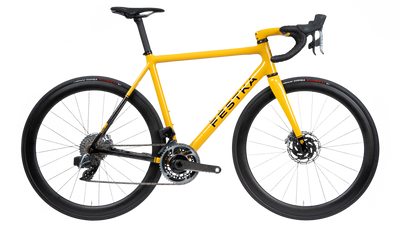
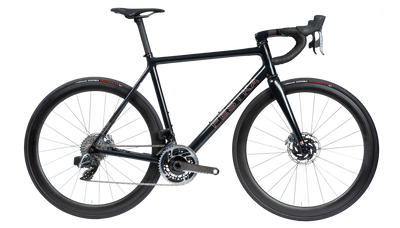
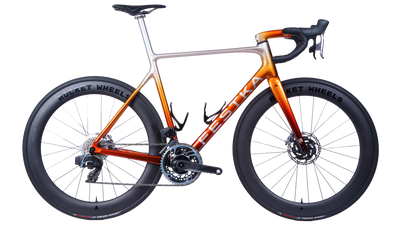
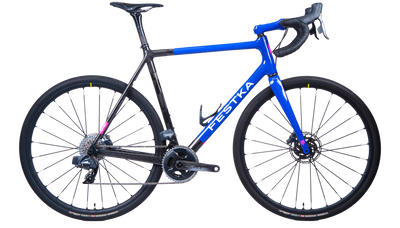
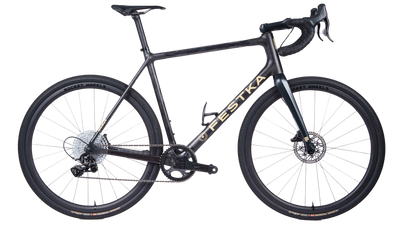



Leave a comment